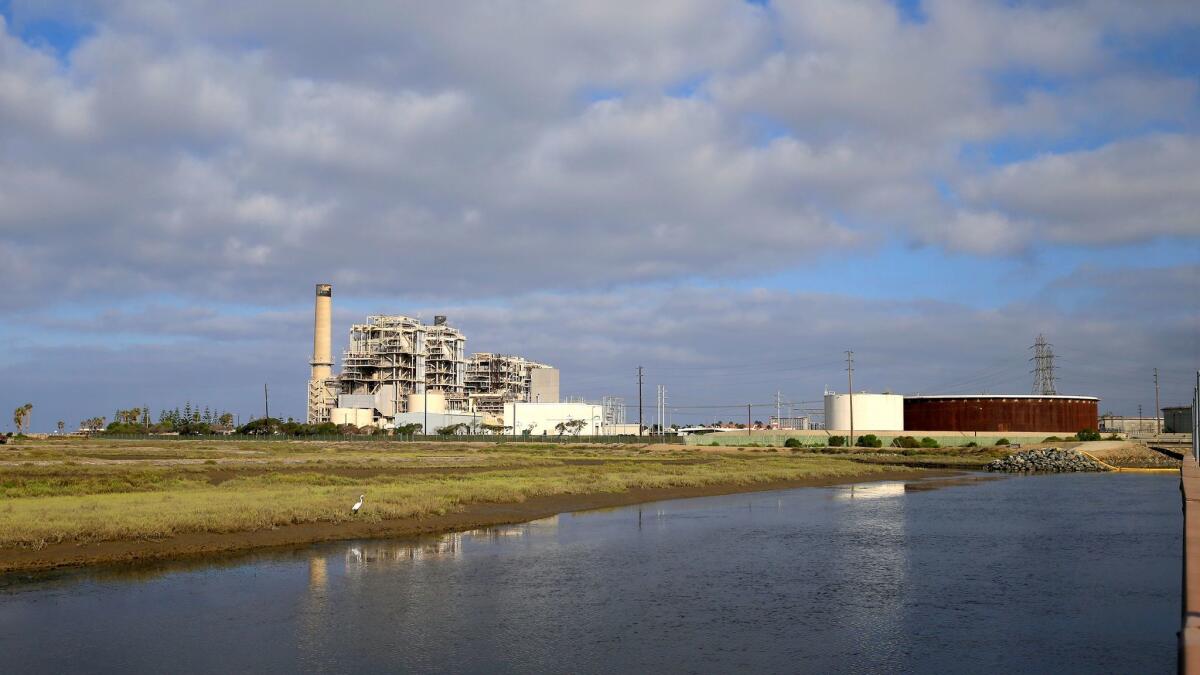Debate over O.C. desalination plant focuses on the intake’s toll on eggs, and the outflow’s briny impact

- Share via
The protracted debate over Poseidon Water’s proposed ocean desalination plant in Huntington Beach was renewed this week when the State Lands Commission released a draft report analyzing planned additions meant to reduce potential harm to marine life and increase the plant’s efficiency.
The supplement to a 2010 environmental impact report addresses the possible effects of a screen and diffuser added to the intake and outflow pipes, respectively, that would be used by the $1-billion desalination facility proposed at Newland Street and Pacific Coast Highway.
The State Lands Commission report concluded that the screen on the intake pipe would help reduce harm to marine animals. The 2010 report had already concluded that the intake wouldn’t significantly impact sea life.
The screen would have 1-millimeter segments to keep marine life from being sucked into the tube.
The diffuser would enable salt water leaving the plant to better mix with the ocean because it would be sprayed in multiple directions.
Opponents of the plant are concerned that the returning salt water is especially briny after it is separated in the desalination process, and that if it doesn’t mix well when it goes back to the ocean, the high concentrations could harm marine life.
The commission report said the salinity of discharges through the diffuser wouldn’t pose a significant threat to marine populations.
The commission did conclude, however, that the force of water from the diffuser could put unidentified sea creatures at significant risk, though it said it could not find such special species during its investigation.
Poseidon Vice President Scott Maloni called that finding “scientifically unsound.”
“We don’t think there is evidence that there will be any significant impact to any species, not to mention a species with special status,” he said.
Ray Hiemstra, associate director of programs at Orange County Coastkeeper, a Costa Mesa-based environmental group, said the commission should have conducted a full EIR rather than focusing on the intake and outflow systems, citing changes in the project over the past seven years.
He said he also believes the new system would do little to protect small fish.
Maloni has said that the company determined the open-faced intake pipe called for in the earlier plan would take in about two fish eggs for every 1,000 gallons of water, an amount he characterized as small. He said the amount would be even smaller with a screen in place.
The commission said the copper-nickel material of the proposed wedge wire screen could leach and affect water quality nearby.
The panel said a superior alternative would be a stainless-steel wedge wire screen because it wouldn’t leach as badly. But that type of screen also poses issues because it is subject to accumulation of organisms on the surface, or biofouling, the report said.
Maloni said copper-nickel is preferred because it balances corrosion with biofouling. He added that the proposed steel screen hasn’t been tested in an open ocean setting so it’s not clear it’s a feasible alternative.
“If it proves to be feasible, we’d be more than happy to consider it. But it’s premature to make that case now,” Maloni said.
The report also listed issues that could arise during construction of the system, including increased emissions into the air and underwater noise affecting marine animals.
The project calls for 10 piles to be driven into the ground to support the wedge wire screen, with each one taking about 15 to 60 minutes.
It could take about three months to install the screen and two months for the diffuser, though they may be constructed together, the report said.
The public can comment on the draft report until July 12. For information on how to submit comments, visit slc.ca.gov/Info/Reports/Seawater/NOA.pdf.
Twitter:@benbrazilpilot
Brazil writes for Times Community News.
ALSO
Maine’s latest fishing frenzy brings in $1,200 a pound — and it’s not lobster
More to Read
Sign up for Essential California
The most important California stories and recommendations in your inbox every morning.
You may occasionally receive promotional content from the Los Angeles Times.











